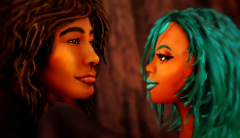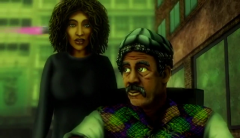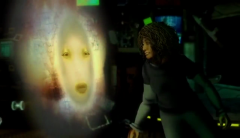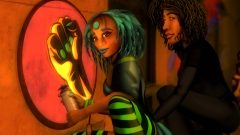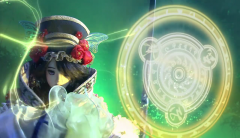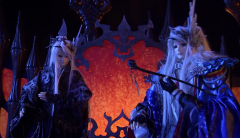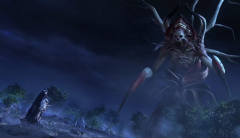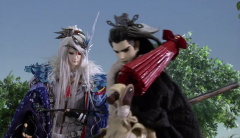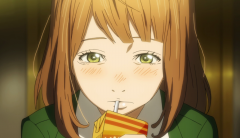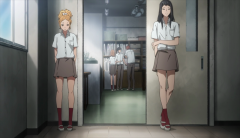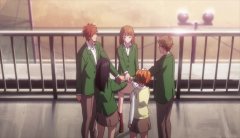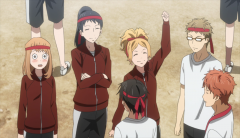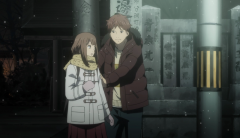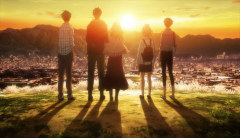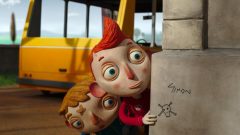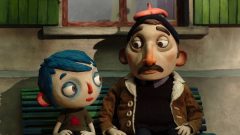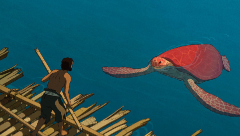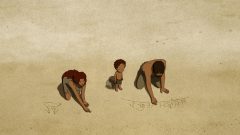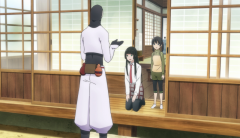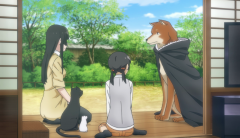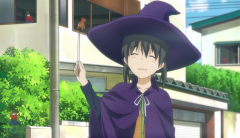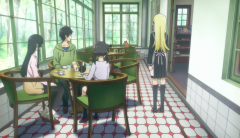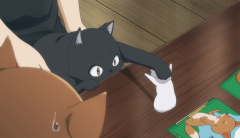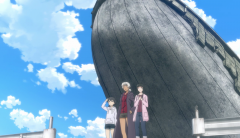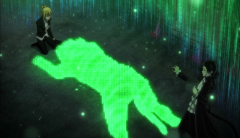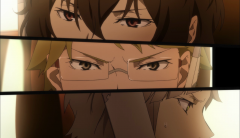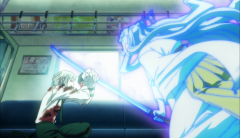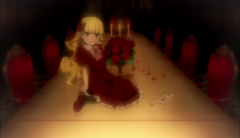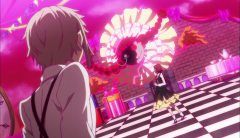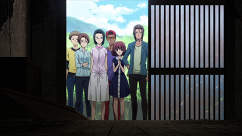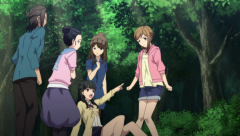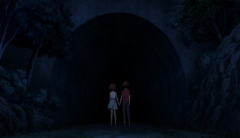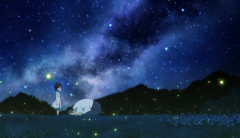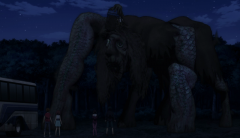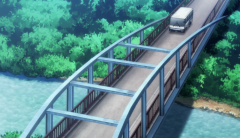Hooray, I’m finally back to this section after a while. I originally plan to review a more in-focus groups of animated films, like Korean movies, anthology movies, female-directed films, etc but now I have a different plan. The days that I cover all these will come, I promise. Instead, this time I want to highlight the very spirit of World Animation- take you around the world to check out a diverse set of animation techniques in wide ranges of genres. As I mentioned before the very purpose of this column is to recommend you readers to check out those movies as an alternative to anime and mainstream animated movies, so don’t feel discouraged to read on the review if you haven’t seen these movies. There will be mild spoilers on the theme of the movies, but I don’t see it as an issue should you guys decide to check out these films later.
The title this week: Strange Frame- Love & Sax sold me based on its premise alone. This is an …hold your breath here… indie musical psychedelic lesbian-themed sci-fi film using cut-out animation and upon reading this I know I have to check it out already. As the box office now is dominated by family-oriented animated movies with themes like “you’re different, but be yourself (Shrek, Ratatouile, Wreck-it Ralph…) or “we family will support each other forever” (the Croods, the Incredibles), something as weird and adult-oriented as this is certainly welcomed. So how the film itself fare, let’s get down to it.
The story of how this film got made is already a curious one. The story was written 10 years prior to its release by Shelley Doty and GB Hajim (and was directed by the latter) with their mutual love for sci-fi, especially works from John Valey and believe it or not, Shinichiro Watanabe. GB Hajim then continued the project by using his local Hawaii community (high school students no less) instead of going to big studio and it took them 7 years to finish the project. The story (if I could call that) follow the love story between Parker and Naia (a slave) and they form a band together. But then stuffs happen and Parker found out that she had been kicked out of the band, while Naia is under controlled by a ruthless record producer. Parker’s now lovesick and she attempts to save her lover from danger.
The settings are one of the real highlight of the film, it’s inviting enough to let us sweep up to its worldbuilding, but also ambiguous enough to still hint on the seedy parts laying underground of this world. Set in the 28th century after humanity has abandoned the polluted Earth and settled on several of Jupiter’s moons, humans then have to adapt to the new environment and as a result the physical appearance has been genetically modified as mutants. This allows the film to go wild on character designs, and they really go all out to create a chaotic and gritty world (with influenced a lot by Blade Runner and Cowboy Bebop). In this world, race, gender and sexual orientation seem to be non-issues and for me that is one of the most distinct and refreshing take on the future I have seen for a long time. At least we have probably one of the very first lesbian leads (someone please correct me if I’m wrong here) and those mutants people are all colored-people, which I personally happy to see that this film has balls to go that far.
Another unique thing about this feature is the technique they engaged. They use cut-out animation (think of the style of South Park) so that the visual animation sets itself out from 3D animation, while at the same time the technique supports the limited animation as they don’t have to animate every single frame. The best example for you to check out this technique is when the band playing their music, their heads are shaking while their bodies don’t move… For the most part I say the technique was used appropriately and moreover it carries certain charms that you can’t find it elsewhere. The music in the film, which is a mixture of jazz and rock, is phenomenal. I really love all the music played by the band, and the score, while goes overboard sometimes, is still solid and engaging.
The story is sadly the film’s weakest part. It always feels like the story is a patch-up of many unrelated stories, and really fall apart when you step back and think about it. As much as I like the chemistry between Parker and Naia, they both brought down by lousy dialogues, meaningless voice overs and the pacing is all over the place. Now that when I recall the actual plot, I can’t fill it pass three sentences because there’s not much into it. The love quest has been done thousand times before and unfortunately this story adds nothing new to the table, at the same time goes through as much genre cliché as possible. The story eventually comes together a bit at the end, but by then who really care for any development whatsoever?
But to be fair, nobody come to watch Strange Fame expecting for a good plot. What they are looking for is the trippiness and LCD-filled plot and boy did it deliver. There are many scenes where the movie just goes full wacko, and they keep going wilder and more bizarre as the story progresses. It also helps that the film’s visuals support that acid trip very well. The sequence where the leads are in drug, for example, contains full of weird and arresting visuals (really a love it or hate it moments I would add) and that high feeling is the feeling you can’t get out of after watching this.
Strange Fame proves to be an experience. Although the plot is as cliché and disjointed as possible, the dark, acid aesthetic, plus its innovative cut-out animation and its unbashed look on race and gender issues make it a movie that you all need to experience at least once. Just like a dream, in about a year time you will most likely forget about the plot of the film, but also like a dream you will never forget about the experience you encounter in your dream. Call this film a nightmare if you like.
Next one (probably next week), let head to South Korea where our comrade K-Off is heading for a world that slowly being eaten away by zombies. Stay tune.

